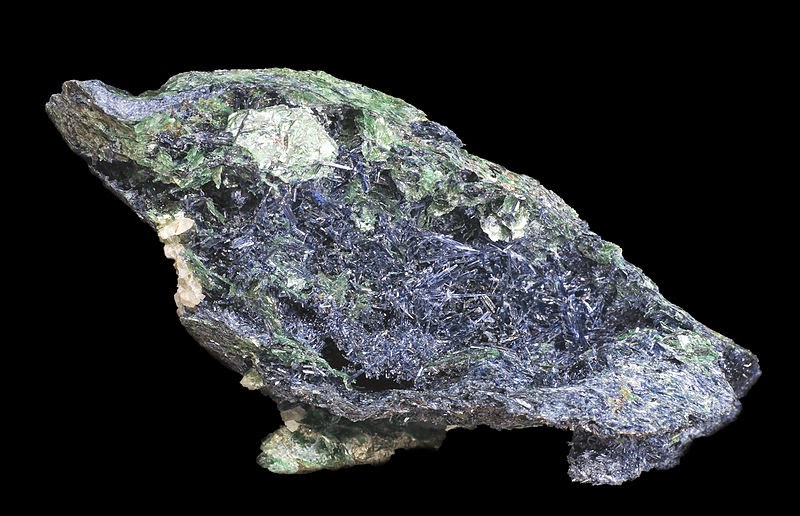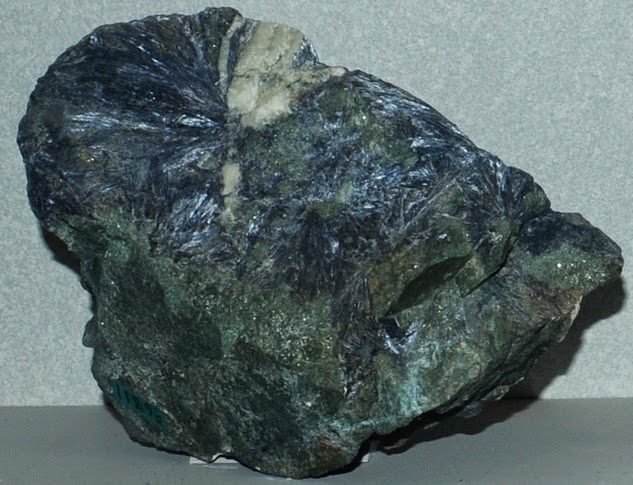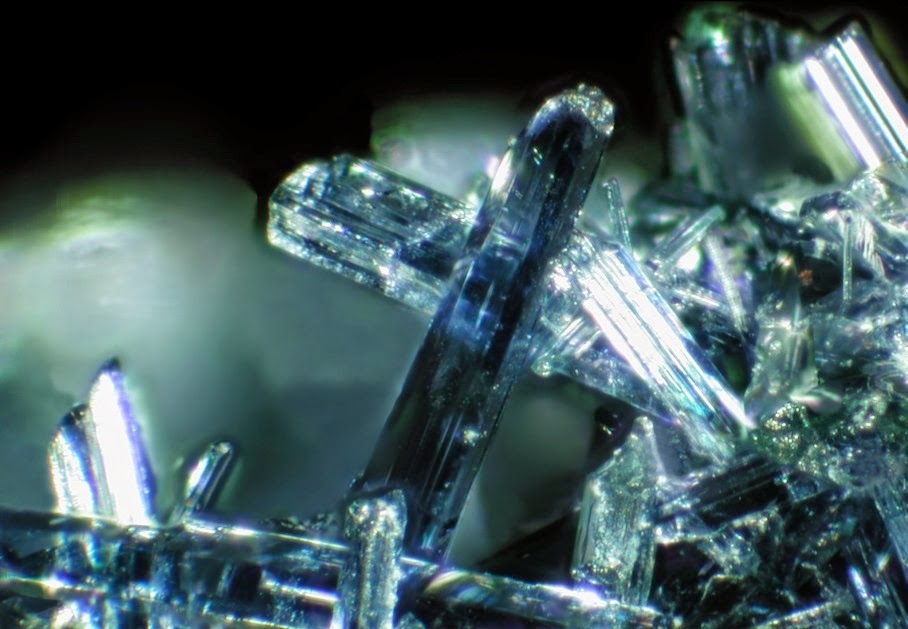
Chemical Formula: [Na2][Mg3Al2]Si8O22(OH)2
Locality: Common world wide.
Name Origin: From the Greek glaukos – “blue” and fanos – “appearing.”
Glaucophane is the name of a mineral and a mineral group belonging to the sodic amphibole supergroup of the double chain inosilicates, with the chemical formula ☐[Na2][Mg3Al2]Si8O22(OH)2
Glaucophane crystallizes in the monoclinic system.
Characteristics
The blue color is very diagnostic for this species. Glaucophane, along with the closely related mineral riebeckite, to which it forms a series with, and their intermediate crossite, are the only well known amphiboles that are commonly blue. Glaucophane forms a solid solution series with ferroglaucophane; Na2(Fe,Mg)3Al2Si8O22(OH)2. Glaucophane is the magnesium-rich endmember and ferroglaucophane is the iron-rich endmember. Ferroglaucophane is similar to glaucophane but is slightly denser and hence increased specific gravity. The two endmembers are indistinguishable in hand specimens and are strongly pleochroic. Glaucophane’s hardness is 5 – 6 and its specific gravity is approximately 3 – 3.2.
Physical Properties
Cleavage: {110} Good, {001} Good
Color: Gray, Bluish black, Lavender blue, Azure blue.
Density: 3 – 3.15, Average = 3.07
Diaphaneity: Translucent
Fracture: Brittle – Conchoidal – Very brittle fracture producing small, conchoidal fragments.
Hardness: 6-6.5 – Orthoclase-Pyrite
Luminescence: Non-fluorescent.
Luster: Vitreous – Pearly
Streak: grayish blue
Photo :












